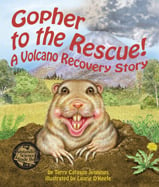Alignment to Standards for WA

| Grade | Number | Standard |
|---|---|---|
| 1 | 3.1.1 | Understands and uses maps and globes to identify major bodies of water and continental land masses. |
| 1 | SS-1.3.1.1 | Understands and uses maps and globes to identify major bodies of water and continental land masses. |
| 1 | SS-1.3.1.1a. | Uses a map or globe to identify the location of the continents and major bodies of water. |
| 1 | SS-1.3.1.1b. | Explains how maps and globes can be used to locate the continents where families live. |
| 2 | SS-2.3.1 | Understands the physical characteristics, cultural characteristics, and location of places, regions, and spatial patterns on the Earthês surface |
| 2 | SS-2.3.1.1 | basic mapping elements such as symbols, compass rose, labels, and a key to read and construct maps that display information about neighborhoods or local communities. |
| 2,3 | 2-3 ES2A | Water plays an essential role in Earth systems, including shaping landforms. |
| 2,3 | 2-3 LS2A | Ecosystems support all life on the planet, including human life, by providing food, fresh water, and breathable air. |
| 2,3 | 2-3 LS2B | All ecosystems change over time as a result of natural causes (e.g., storms, floods, volcanic eruptions, fire). Some of these changes are beneficial for the plants and animals, some are harmful, and some have no effect. |
| 2,3 | 2-3 LS2C | Some changes in ecosystems occur slowly and others occur rapidly. Changes can affect life forms, including humans. |
| 3 | SS-3.3.1.2a. | Explains the physical geography, including landforms and climate, of Mexico, Canada, and the U.S. |
| 4,5 | 4-5 ES2A | Earth materials include solid rocks and soil, water, and gases of the atmosphere. Materials have different physical and chemical properties which make them useful in different ways. Earth materials provide many of the resources that humans use. |
| 4,5 | 4-5 ES2B | Weathering is the breaking down of rock into pebbles and sand caused by physical processes such as heating, cooling, and pressure, and chemical processes such as acid rain. |
| 4,5 | 4-5 ES2C | Erosion is the movement of Earth materials by forces such as wind, moving water, ice forming, and gravity. |
| 4,5 | 4-5 LS1A | Plants and animals can be sorted according to their structures and behaviors. |
| 4,5 | 4-5 LS1B | Plants and animals have different structures and behaviors that serve different functions. |
| 4,5 | 4-5 LS1C | Certain structures and behaviors enable plants and animals to respond to changes in their environment. |
| 4,5 | 4-5 LS1D | Plants and animals have structures and behaviors that respond to internal needs. |
| 4,5 | 4-5 LS2A | An ecosystem includes all of the populations of living organisms and nonliving physical factors in a given area. Living organisms depend on one another and the nonliving physical factors in their ecosystem to help them survive. |
| 4,5 | 4-5 LS2D | Ecosystems can change slowly or rapidly. Big changes over a short period of time can have a major impact on the ecosystem and the populations of plants and animals living there. |
| 4,5 | 4-5 LS2E | All plants and animals change the ecosystem where they live. If this change reduces another organismês access to resources, that organism may move to another location or die. |
| 4,5 | 4-5 LS3B | Plants and animals inherit many characteristics from their parents. Some inherited characteristics allow organisms to better survive and reproduce in a given ecosystem. |
| 4,5 | 4-5 LS3C | Some characteristics and behaviors result from an individual plantês or animalês interactions with the environment and are not passed from one generation to the next by heredity. |
| K,1 | K-1 LS1B | All plants and animals have various external parts. |
| K,1 | K-1 LS1D | Different animals use their body parts in different ways to see, hear, grasp objects, and move from place to place. |
| K,1 | K-1 LS1E | Animals have various ways of obtaining food and water. Nearly all animals drink water or eat foods that contain water. |
| K,1 | K-1 LS2A | There are different kinds of natural areas, or habitats, where many different plants and animals live together. |
| K,1 | K-1 LS2B | A habitat supports the growth of many different plants and animals by meeting their basic needs of food, water, and shelter. |
| K,1 | K-1 LS3B | There are many different types of living things on Earth. Many of them are classified as plants or animals. |
| K,1 | K-1 LS3C.1 | Describe several external features and behaviors of animals that can be used to classify them (e.g., size, color, shape of body parts). |
| K,1 | K-1 LS3C.3 | how pairs (males/females) of plants and/or animals are similar to and different from each other (e.g., cats and dogs both have four legs, but many dogs have longer snouts than cats). |